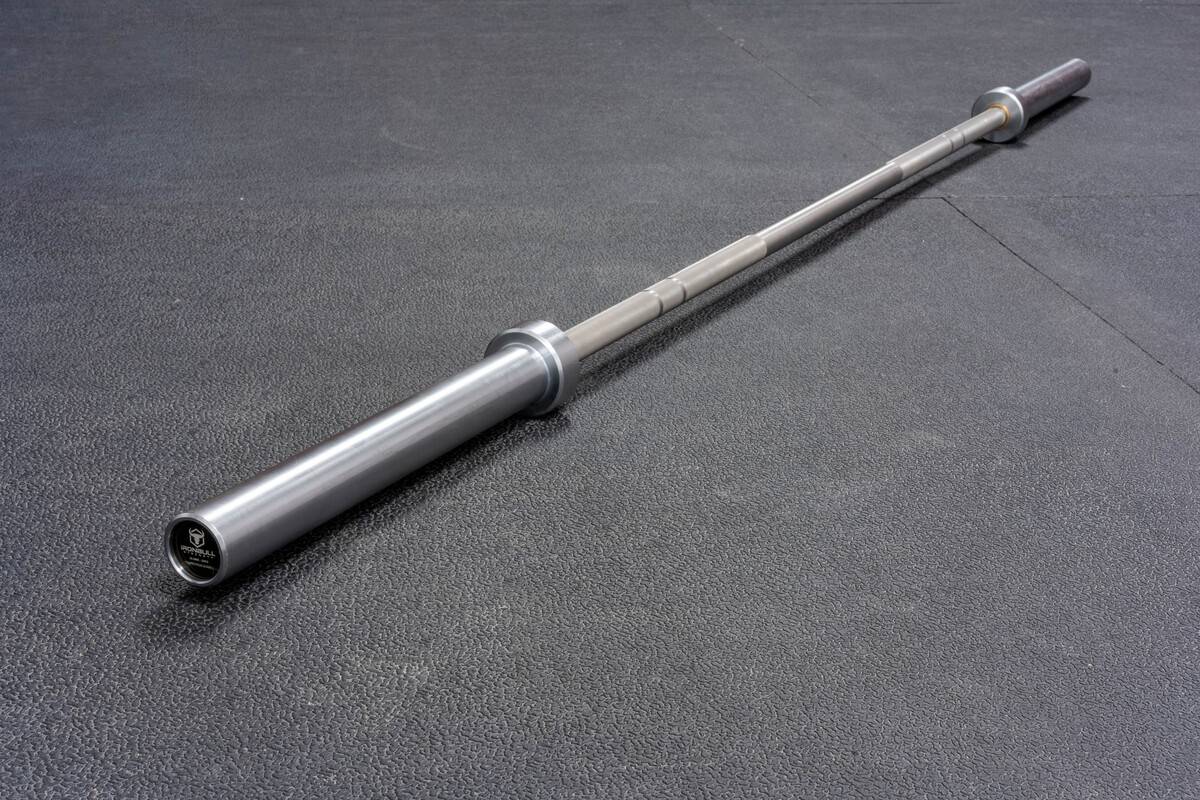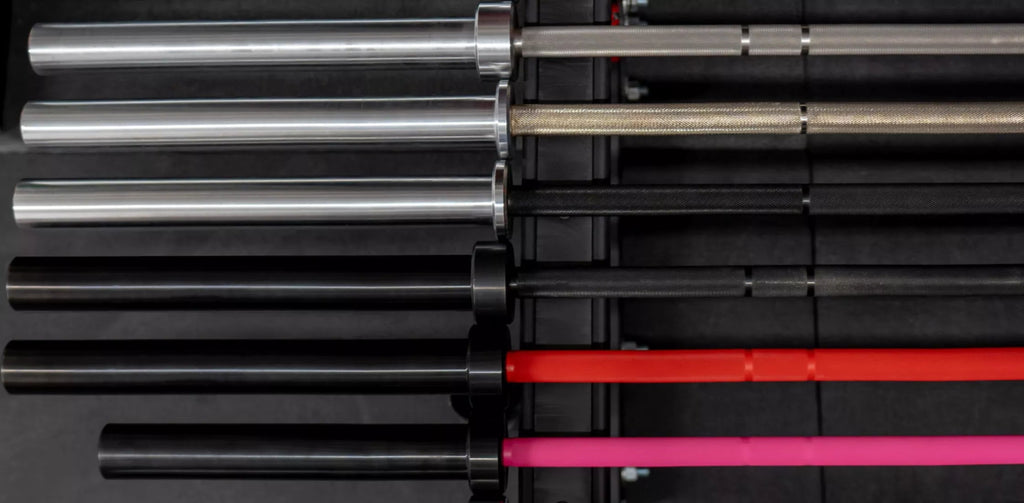How Much Does a Barbell Weigh?

How much does a barbell weigh? The standard barbell for weightlifting is typically 20 kilograms or 45 pounds. The weight of this barbell can vary depending on brand and build. However, most barbells weigh around 20 kilos or 45 pounds as this is a universal standard to keep all lifters performing under the same conditions.
It’s important to understand the weight of the barbell as it can profoundly impact the form and effectiveness of your strength training routine. Not all barbells are created equal, and the variations of barbell types can cause a change in barbell weight and functionality. As we continue to explore this topic regarding the weight of a barbell, we will explore the dimensions and purposes of different barbells, as well as other features of the barbell that could adjust its overall weight.
From the classic 45-pound standard barbell to specialized bars designed for powerlifting, we'll unravel the nuances that make each barbell type unique. So, whether you're a seasoned lifter or a newcomer to the world of strength training, understanding the weight of a barbell is the first step towards improving your workouts and unlocking the full potential of your ability.
What is a Barbell?

A barbell is a fundamental piece of strength training equipment within the realm of strength training. It serves as a formidable form of resistance that can overload your anatomy more effectively. This essential piece of gym equipment takes the form of a lengthy metal bar, capable of loading evenly spaced weights at each end of the bar. A barbell consists of loadable sleeves, rotating collars, a lifting shaft, and knurling strategically placed on parts of that lifting shaft.
What sets the barbell apart is its unique ability to overload strength more effectively than other forms of resistance. This efficacy is rooted in the barbell's design, allowing lifters to handle heavier weights by intelligently displacing resistance and applying diverse techniques during exercises. But in order for a barbell to work, traditionally it needs to weigh around 20 kilograms to 45 pounds to execute movements such as the squat, bench, deadlift, and overhead press.
Why Does Barbell Weight Matter?
The weight of the barbell matters because it has to do with:
- Alignment within fitness
- Competition standards
- Form and technique
Alignment with Fitness
The barbell has become a standard in the fitness industry. The idea of a 20 kilograms or 45 pound barbell unifies workout routines and planning, as it aligns with the typical weight plates found in most gyms. This standardization allows for easy progression, with athletes and fitness enthusiasts being able to add or remove weight in consistent increments.
Competition Standards
In competitive strength sports, such as powerlifting, adhering to specific weight standards is crucial. The 20 kilograms or 45 pound barbell has been historically recognized as the standard weight for these competitions. This consistency ensures a level playing field for all competitors, as they use the same equipment. Some competitions may allow variations, such as a 55-pound squat bar, which is designed to accommodate heavier loads due to its increased thickness and rigidity. For the most part, most competitions use a 20 kilograms or 45 pound barbell for competition.
Form and Technique
The weight of the barbell directly influences an individual's form and technique during exercises. A barbell may exhibit different characteristics, such as whip (flexibility), which can impact performance in movements like Olympic lifting, squatting, and deadlifting. The amount of whip in the barbell can affect the lifter's ability to control the bar during dynamic movements, contributing to the overall feel and effectiveness of the exercise.
Lifters often develop specific skills based on the equipment they use. The familiarity with the characteristics of a standard 20 kilogram or 45 pound barbell allows individuals to hone their techniques and optimize their performance, especially in competitive scenarios where mastery of form can make a significant difference.
Different Types of Barbells
Below, we will discuss the different types of barbells that are similar to a traditional straight barbell. There are plenty more barbells we can reference, but below we will outline the most dominant ones you would see in the fitness industry.
- Olympic Barbell
- Power Bar
- Deadlift Bar
- Squat Bar
- Axel Bar
- Speciality Bars
Olympic Barbell:
An Olympic barbell is a standardized weightlifting bar that weighs 20 kilograms (44 pounds) for men and 15 kilograms (33 pounds) for women. It is used for Olympic movements such as the clean and push jerk. These bars are typically 86 inches long with rotating sleeves and a medium knurling that allows for grip.
Power Bar:
A power bar, also known as a powerlifting bar, weighs 45 pounds and is designed for powerlifting exercises such as the squat, bench press, and deadlift. It is stiffer and more rigid than Olympic barbells, with a thicker grip as well. The grip and aggressive knurling of the barbell help improve performance with lifting heavier loads.
Deadlift Bar:
A deadlift bar weighs 45 pounds and is specifically designed for the deadlift exercise. It is longer and thinner than standard or Olympic barbells, allowing for more flex in the bar. Thankfully, the weight and strength of the bar can handle how much the bar is allowed to bend. The flex helps to reduce the range of motion and makes it easier to break the bar off the ground through the use of techniques such as the “slack pull”.
Squat Bar:
A squat bar is a thicker rigid bar that weighs around 55 pounds. A squat bar is just like the power bar. The differences are with the length of the bar and the toughness of the bar. Since the barbell squat is historically a stronger movement, the bar needs to be tough and stiff in order to squat with ease. This means the squat bar is heavier and longer to accommodate the resistance loaded with it.
Axel Bar:
The axel bar is unique as it ranges between 20-45 pounds in weight. It is a thicker barbell with a larger diameter than other types of barbells. It is often used in strongman training and competitions. The increased diameter could cause the bar to be partially hollow, making it lighter due to the materials used. Some axel bars are heavier, so make sure to know the weight of your axel bar before using it.
Specialty Bar:
Specialty bars range in weight, between 45-65 pounds depending on the structure of the bar. The structure of the bar might not be as dependable as a straight bar, so some might have to be heavier to support the design of its structure. Some specialty bars in discussion are the:
- Trap Bar
- Safety Squat Bar
- Cambered Bar
- Swiss Bar
- Yukon, Buffalo, and Duffalo Bar
How to Choose the Right Barbell for You
In order to pick the right barbell for you, you need to make sure to consider:
- Barbell length
- Knurling strength
- Exercise selection
Barbell Length
The longer the barbell, the more weight to load and can be a great tool for strength. Shorter bars might be lighter and for beginners and new lifters. When it comes to the length of the barbell, make sure that before you decide on purchasing a barbell that it meets the needs of your space. CrossFit gyms are known to have shorter bars not due to the weight of the bar, but to meet the needs of space and accommodate several lifters at a time.
Knurling Strength
If you are an athlete that does more pulling exercises, you might want a bar with more aggressive knurling than others. This would apply to powerlifters and strongmen. For those who do Olympic lifts, you would want a bar with moderate knurling as an aggressive knurling to cause injuries to the skin with catching different types of lifts.
Exercise Selection
One of the most important factors with purchasing a barbell has to do with exercise selection. Some barbells can create more instability than others. Some barbells are built to accommodate your center of gravity, such as a trap bar. Some exercises need more whip, some need a more rigid build. Before purchasing your next barbell, make sure the barbell meets your needs with your program and exercise selection.
[RELATED: What Is the Best Barbell for a Home Gym?]
Conclusion
The weight of a barbell is a crucial aspect that significantly influences strength training routines, form, and competition standards within the fitness industry. The standard barbell for weightlifting typically weighs 20 kilograms or 45 pounds, providing a universal benchmark for athletes and fitness enthusiasts. This standardization facilitates alignment in fitness, ensuring consistent workout routines and easy progression.
Make sure that before you choose a barbell consider factors such as barbell length, knurling strength, and exercise selection. These factors have a big impact on your performance ability, and using a barbell as a tool to improve your performance and make you a better lifter than ever.










